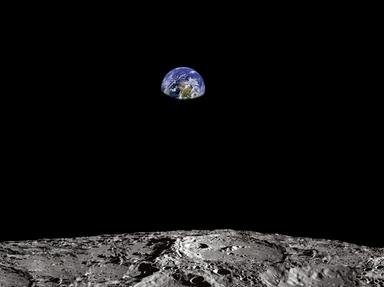Quiz Answer Key and Fun Facts
1. What does "NASA" stand for?
2. We all know about the tragic fire during a test of Apollo 1. What was the next Apollo mission?
3. Which of these probes is the furthest artificially made object from the sun?
4. What was the name of John Glenn's Mercury capsule?
5. By 2004, only one probe had ever explored Mercury. Which was it?
6. On 28 January 1986, the space shuttle Challenger exploded 73 seconds after takeoff but it is (symbolically) the United States' longest mission. Why? According to tradition, the mission clock is still running since they havn't landed yet.
7. Ranger 7 was the first American spacecraft to take a picture of the moon. What area of the moon did it photograph?
8. Possibly the most famous picture a probe has ever taken was Viking 1's picture of the "Face on Mars". What region of Mars is this feature in?
9. The first manned Gemini flight, Gemini 3, was (unofficially) named "Molly Brown". How did this nickname arise?
10. Jet Propulsion Laboratories processes much of the data from America's space program. Where is it located?
Source: Author
tralfaz
This quiz was reviewed by FunTrivia editor
bloomsby before going online.
Any errors found in FunTrivia content are routinely corrected through our feedback system.


